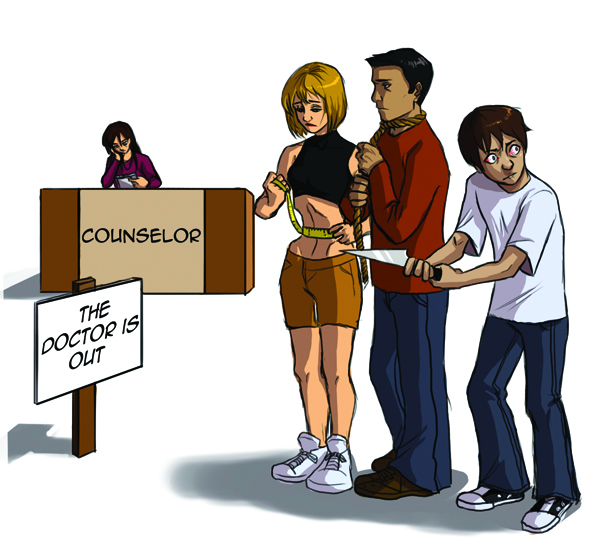Too Many Students, Too Few Counselors
In this day and age, depression is more common than acne in high school, so it’s really comforting to know that there are people we can talk to in our darkest hours. When friendly advice and familial support just don’t cut it, we can thank the counselors who dedicate themselves to offering professional help to anyone who asks for it—whenever they ask for it. Too bad we can’t count on the Syracuse University Counseling Center to provide students with that comfort.
My high school in Calabasas, Calif. had one guidance counselor on payroll. I imagine she had, at most, two students seek her help every year. But my high school’s population barely broke 400. At SU, the total student population is well over 20,000. SU gets tens of thousands of dollars in tuition from a majority of its students, and yet we can’t afford a better counselor-to-student ratio than my puny high school.
The counseling center has 12 counselors on its staff, not including the three graduate interns. That brings the grand total of counselors to 15, thus dedicating one professional to 650 full-time undergraduates. Sure, not every student seeks professional help during their time at SU, but from what I’ve seen, the counseling center cannot effectively handle the amount of students in distress.
Two of my close friends called to make an appointment at the counseling center last semester. Both were dealing with symptoms of depression, anxiety, and stress, and both were told the earliest available appointment was three weeks away. When someone is already at her wit’s end, three weeks seems like an eternity. For a center that operates on a, “We’re here for you!” platform, budgeting issues cannot excuse putting off the help some students so desperately need.
Of course, the students given priority are those contemplating suicide, or the ones who want help so badly they might even pretend they’re suicidal in order to get it. Maybe that’s the type of lie that would get you a one-way ticket to Hell, but in this context it’s more forgivable. I’d be hard-pressed to judge anyone seeking help in a place where counseling should be readily available.
When another friend called in for help, they told her the next available appointment was weeks away—big suprise. Instead of pretending to have suicidal thoughts, she took advantage of the center’s walk-in emergency consultations. Her efforts proved helpless; emergency consultations are not full counseling sessions—they last no longer than 20 minutes. Frustratingly, in her case, the topic kept returning to suicide, despite the fact that she made it very clear from the start that she did not want to kill herself. The session centered more on preventing a non-existent suicide than helping her tackle the real issues. Don’t get me wrong, people who have suicidal thoughts deserve to get help right away, but that doesn’t mean other, non-suicidal students should be discounted. At $50,000 a year, SU should find the funding to provide every student with the help they need, no matter how serious the problem.
Judging from my friends’ experiences, I know that I won’t entrust my psychological well-being to the counseling center any time soon. When I need help, I’ll pull out a mirror and talk to myself. I don’t have to wait three weeks for that.


